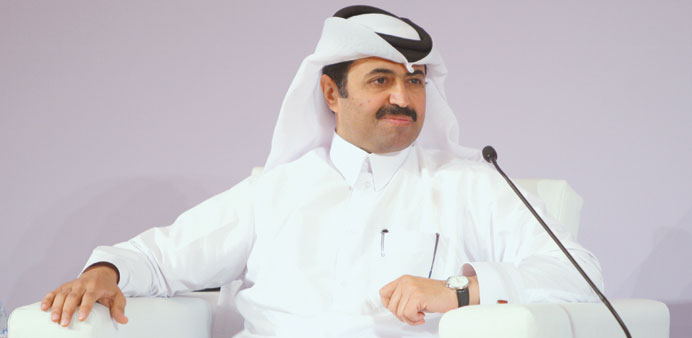hE the Minister of Energy and Industry, Dr Mohamed bin Saleh al-Sada has stressed the need for a multi-dimensional approach in developing future energy outlook, especially in view of a forecast that the global natural gas demand will rise to 5tn cubic metres in 2035 compared to 3.4 tcm today.
“To do so, some interconnected issues must be carefully examined,” he said. They include the impact of government policies, limiting carbon emissions, the present and future role of Opec, the expanding use of technology, continuing attempts for improving energy efficiency, growing role of renewable and energy security concerns.
Such complexities, al-Sada said, are incremental in nature, going beyond the traditional norms of supply and demand and have certainly added to the task of mapping the future.
“Hence the requirement for a innovative approach that can address all these fundamentals and non fundamentals considering their due weightage, commensurate with their importance, to come out with future outlook,” al-Sada said at the ExxonMobil 2013 Energy Outlook Forum at yesterday.
“Over the next 30 years, we will see the world’s population reaching nearly 9bn people. Qatar is no exception and we are already witnessing an equally impressive increase in population. This translates into growing mobility requirements, rising electricity needs for homes and other buildings, and increasing energy supplies to power industry,” al-Sada said.
Regionally, the Middle East is the world’s largest oil producing region and has the largest concentration of reserves.
Some 48% of the world’s known oil reserves are situated here, and nearly 33% of total world oil supply is from this region.
According to the International Energy Agency (IEA), oil demand in this region grew by around 60% during the past decade, a yearly average of 225,000 bpd, outstripping every region except China.
Al-Sada said, “Today, I am optimistic about the future and my confidence is the reflection of the journey we have undertaken. The successful path of our country has been guided by the powerful vision of HH the Emir Sheikh Hamad bin Khalifa al-Thani.
His vision has become a reality as we continue to retain the title of world’s leading and reliable LNG producer. Our presence is felt across all corners of the world.
We designed and built some 14 LNG trains, including the first mega trains, which can process more than twice the amount of natural gas than our own earlier world-scale trains, making them the largest operating LNG liquefaction facilities in the world.
“Together with our partners we have drilled and completed the largest wellbores ever drilled offshore to produce natural gas; built two new classes of LNG carriers creating a revolution in the LNG shipping industry over the past three decades, allowing us to ship 80% more cargo with about 40% less energy per-tonne than conventional LNG carriers,” al-Sada said.
HE Dr al-Sada at the ExxonMobil 2013 Energy Outlook Forum yesterday.



